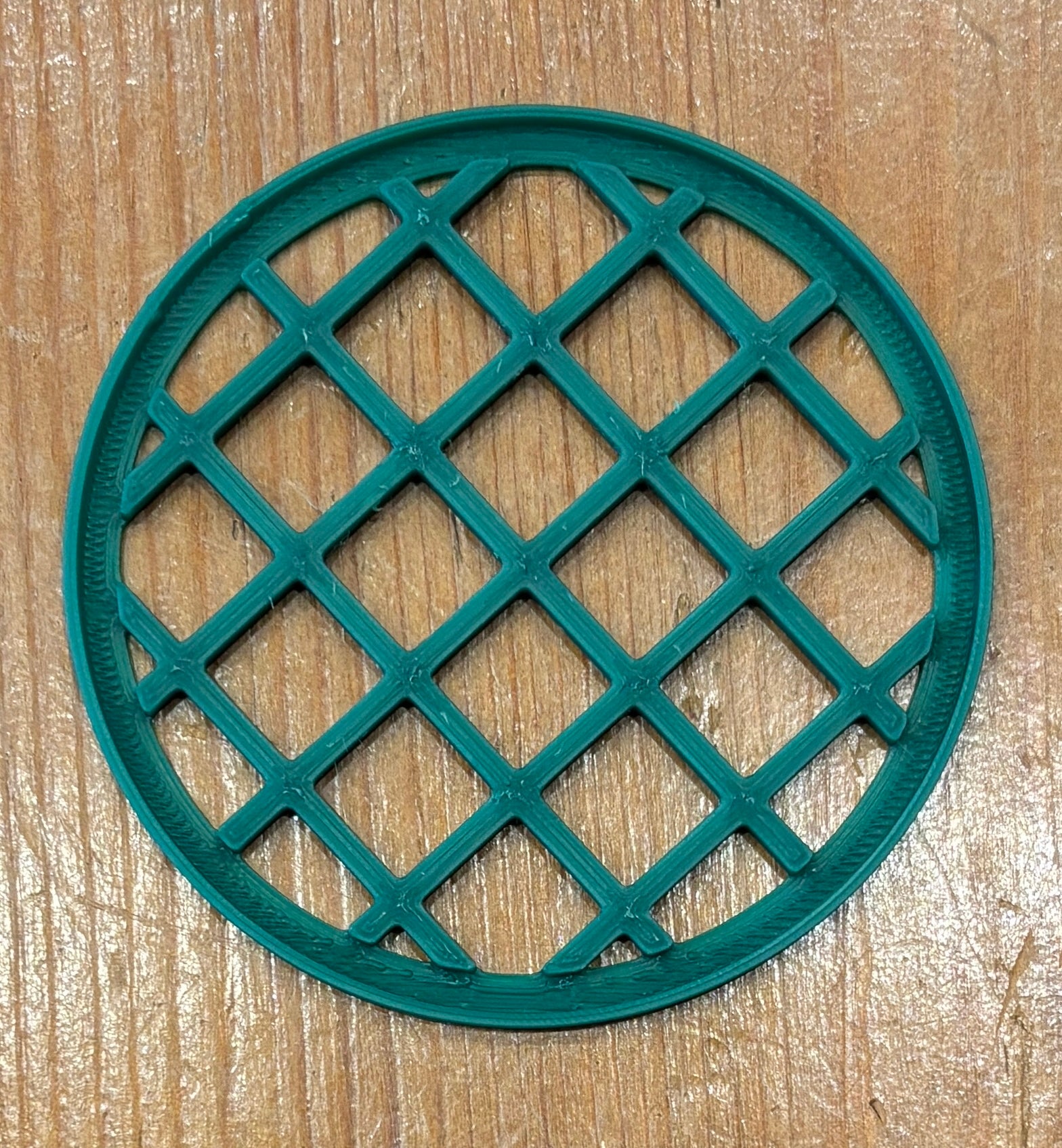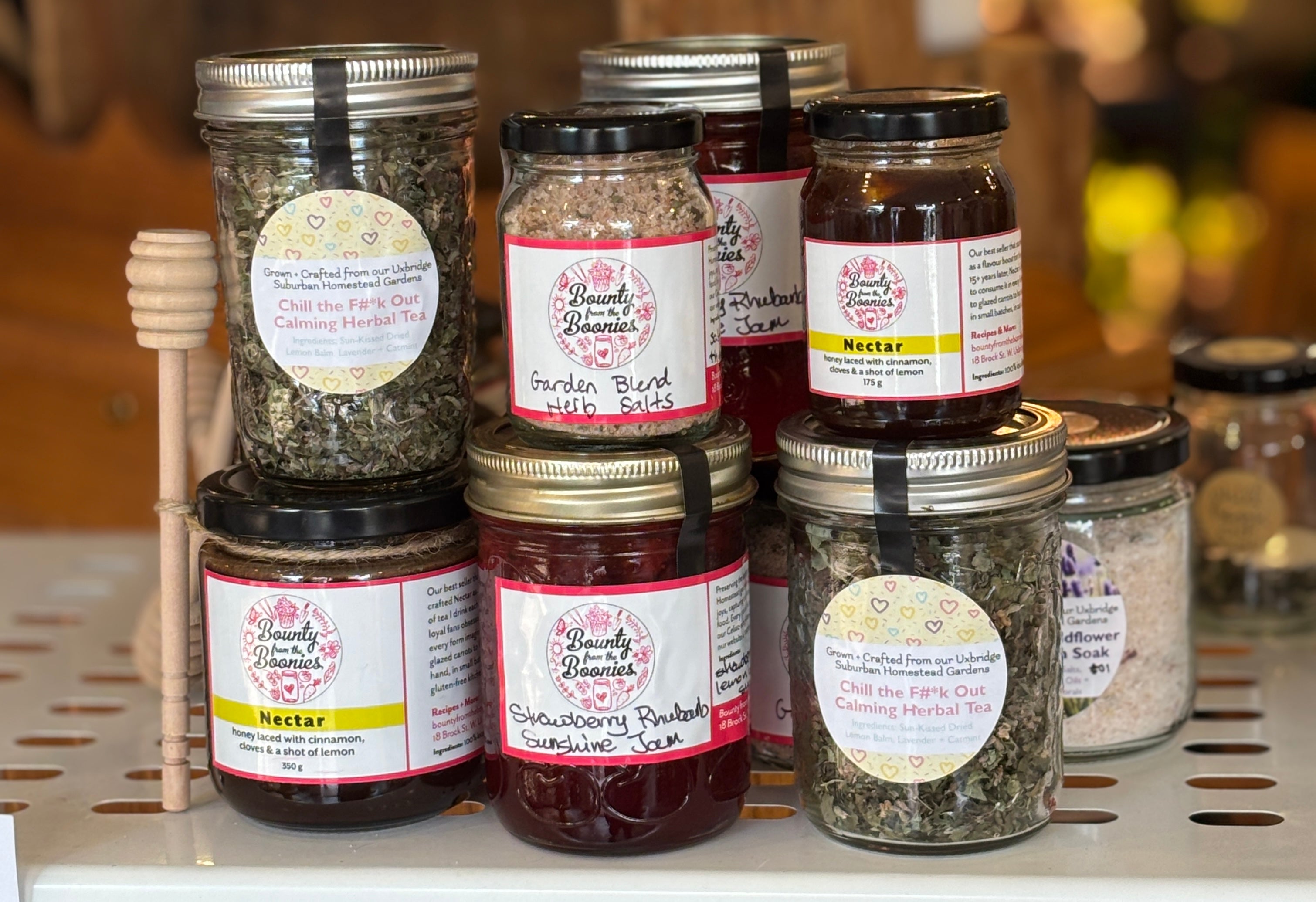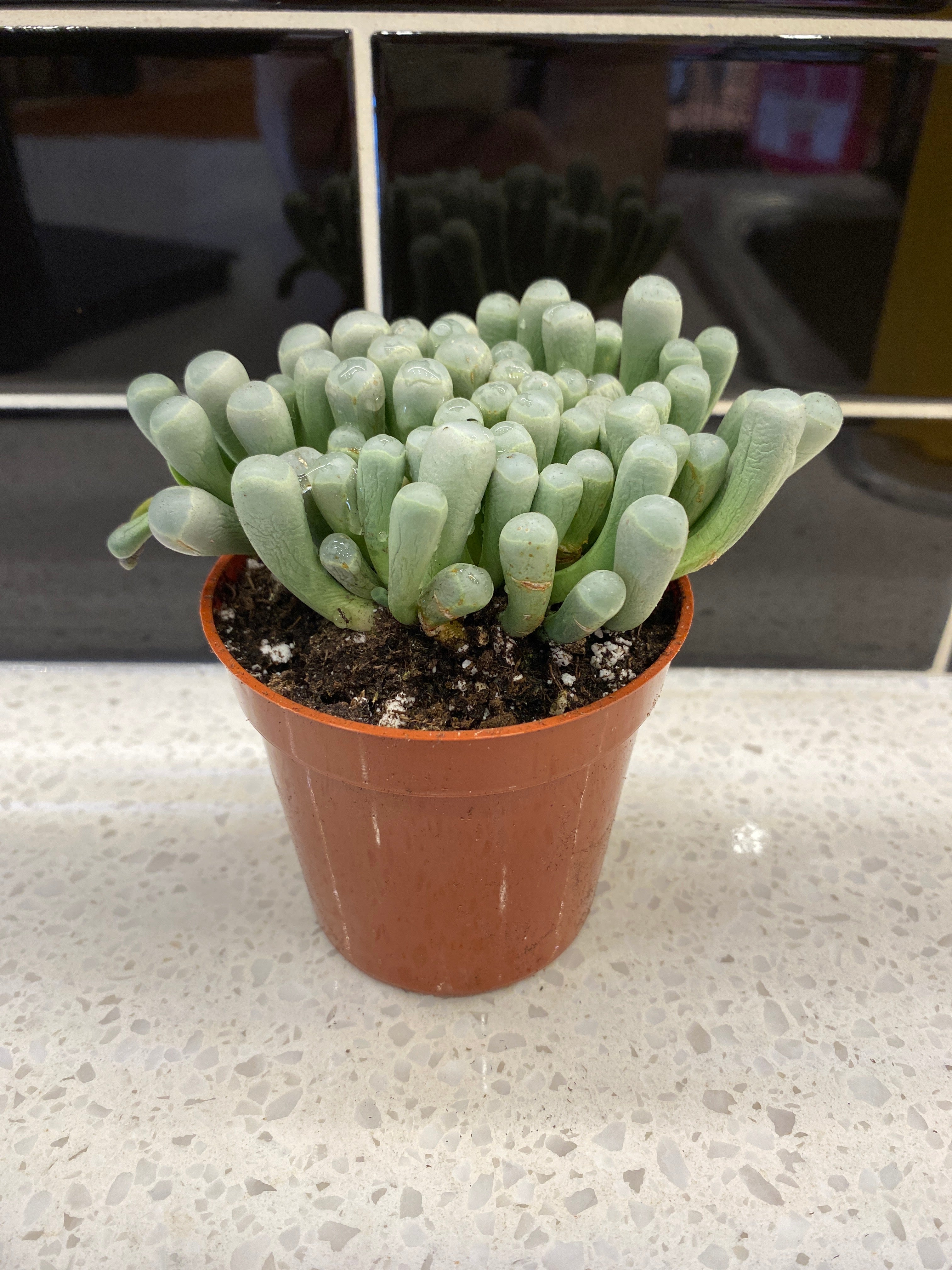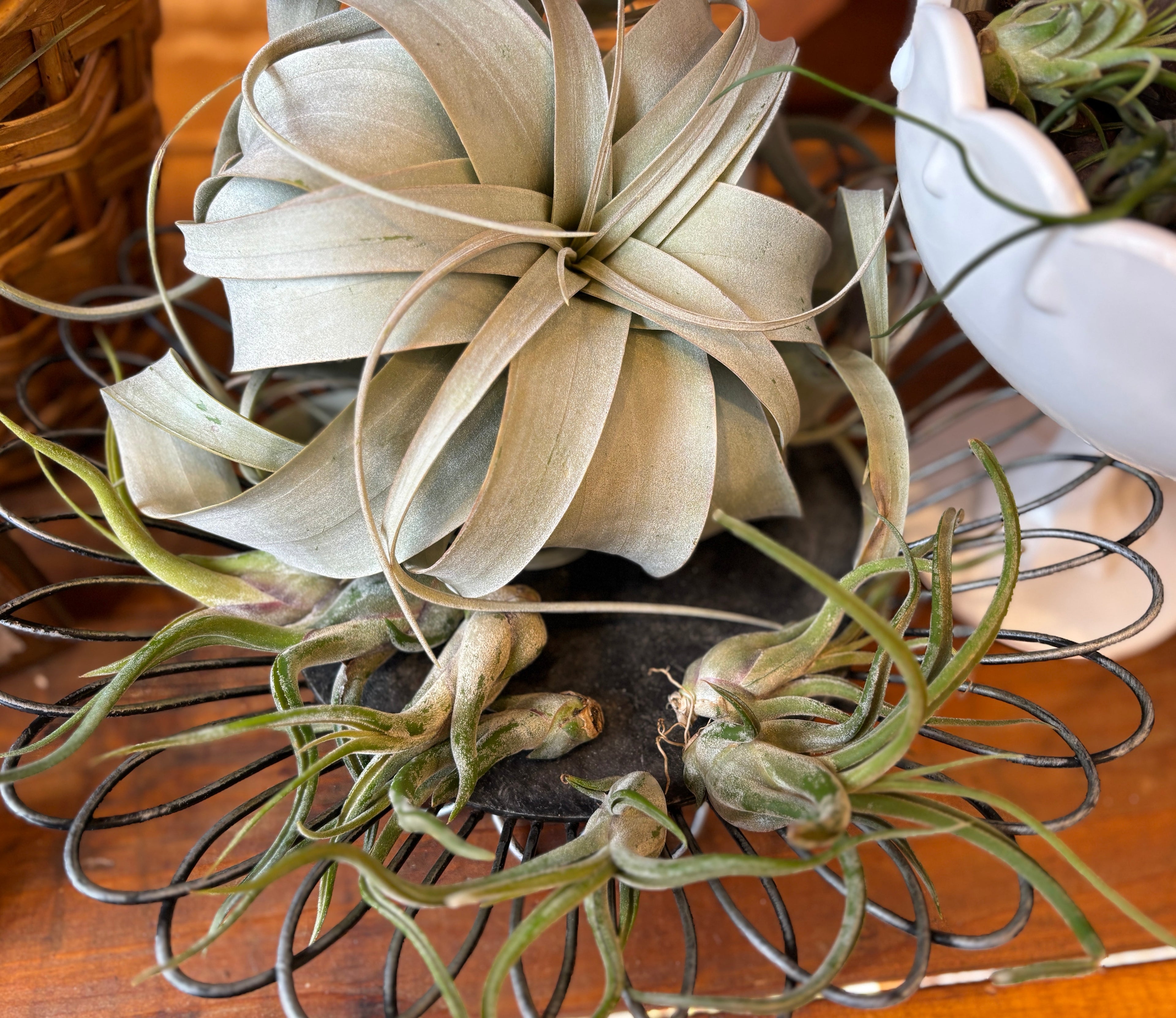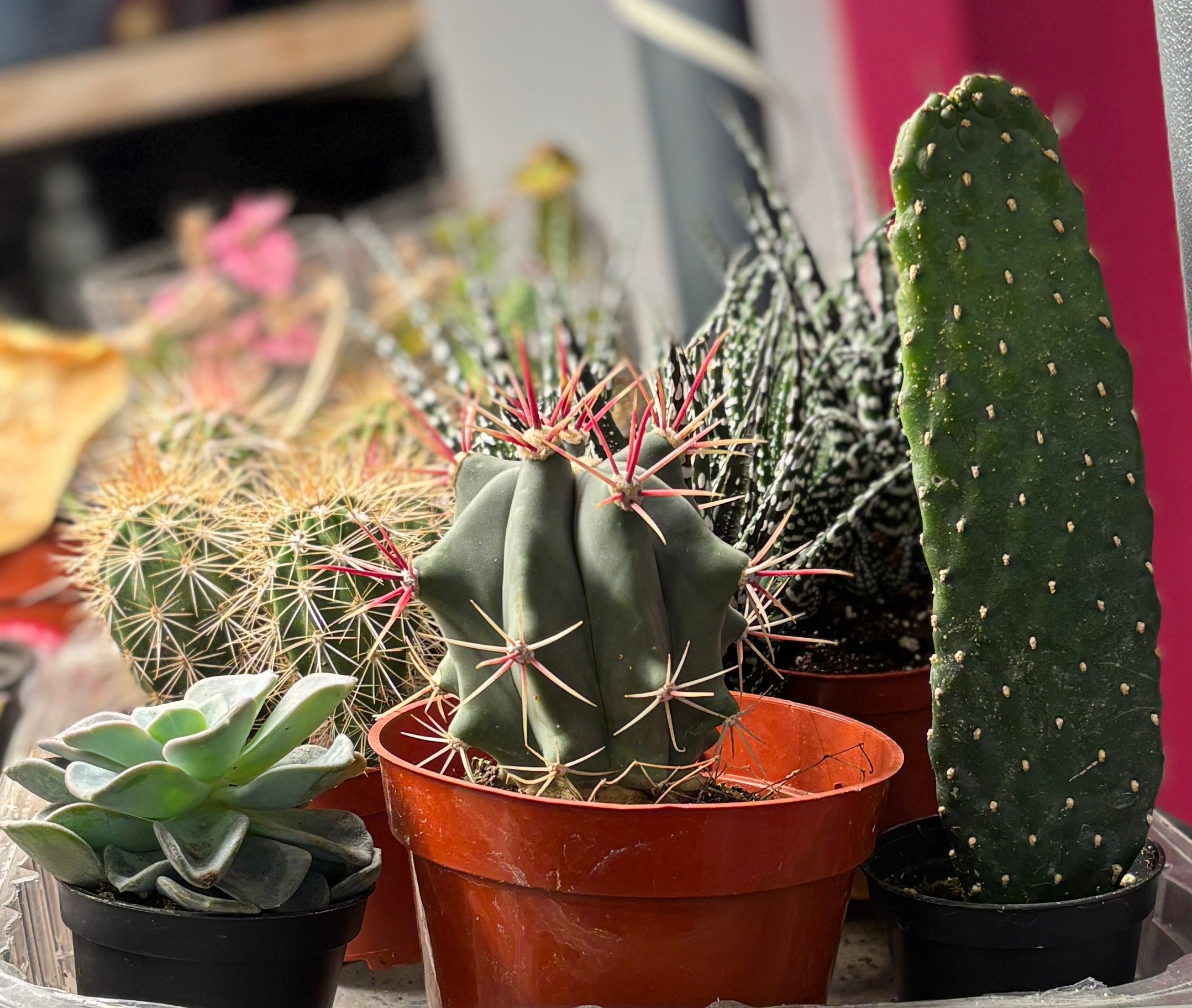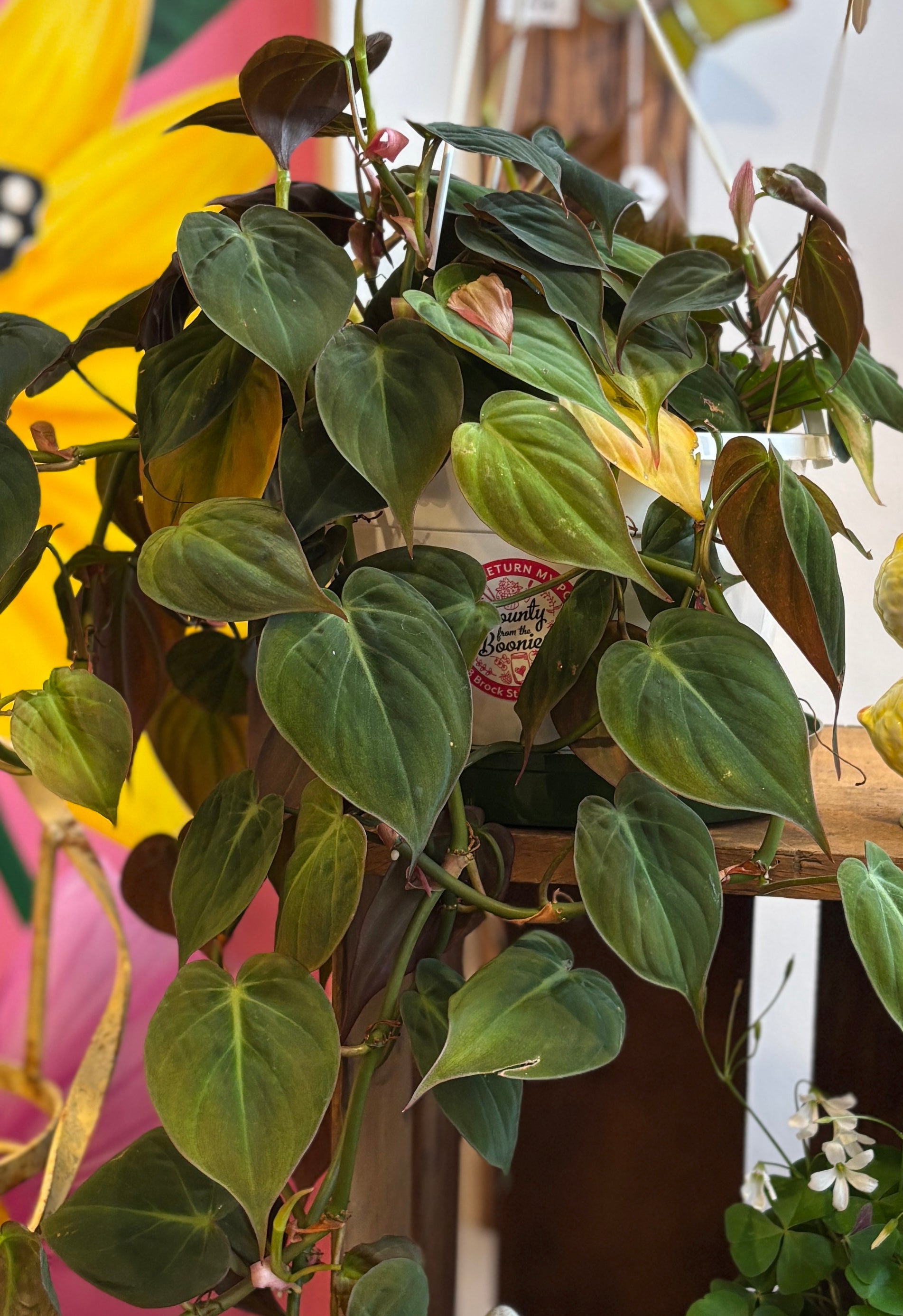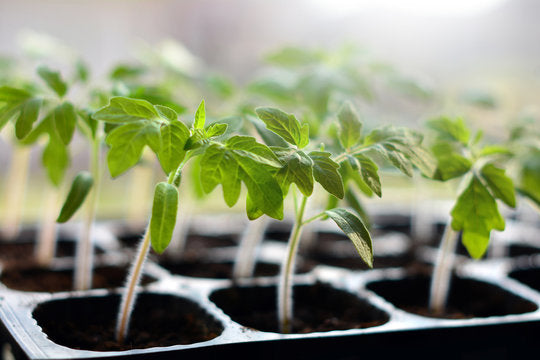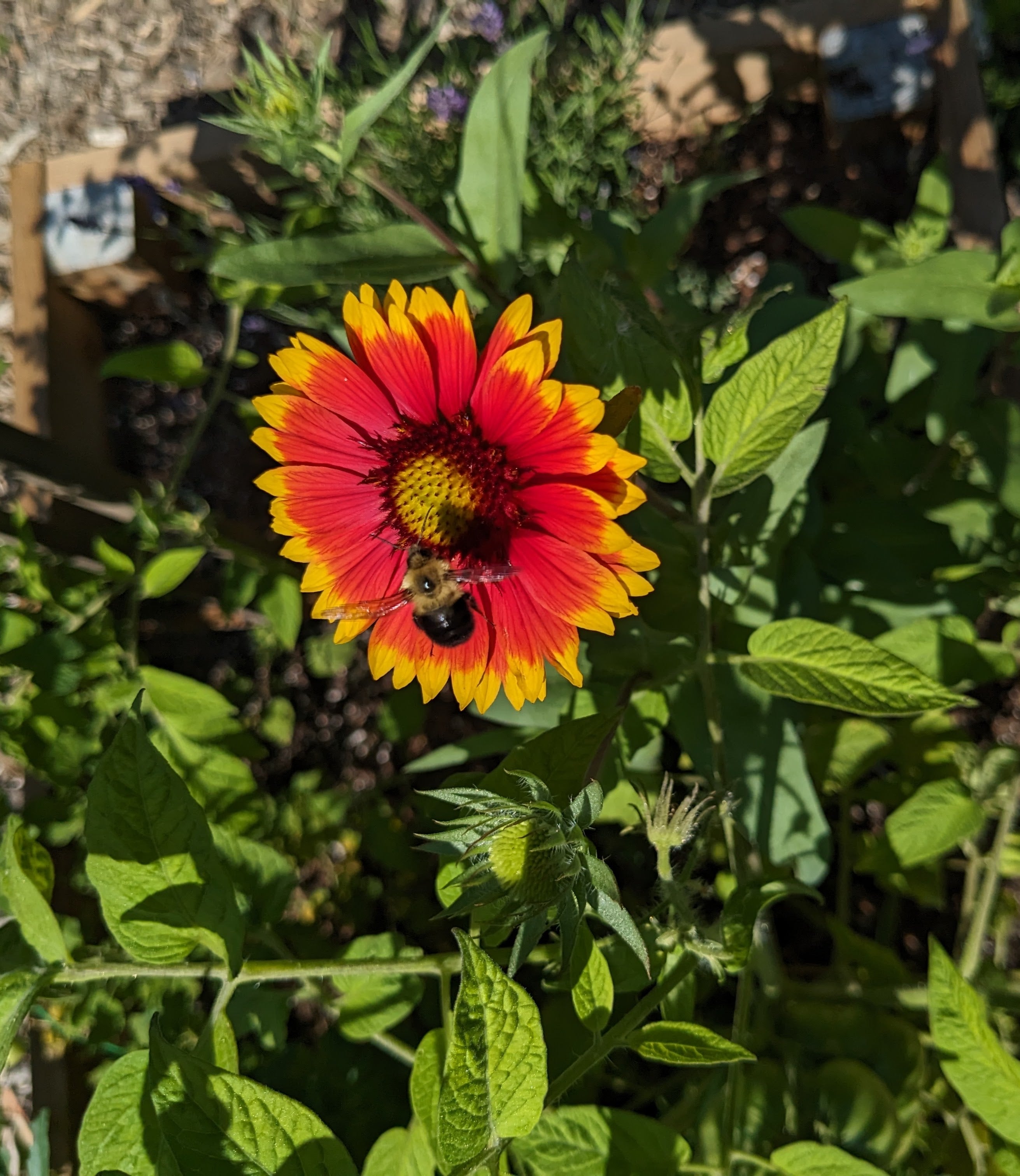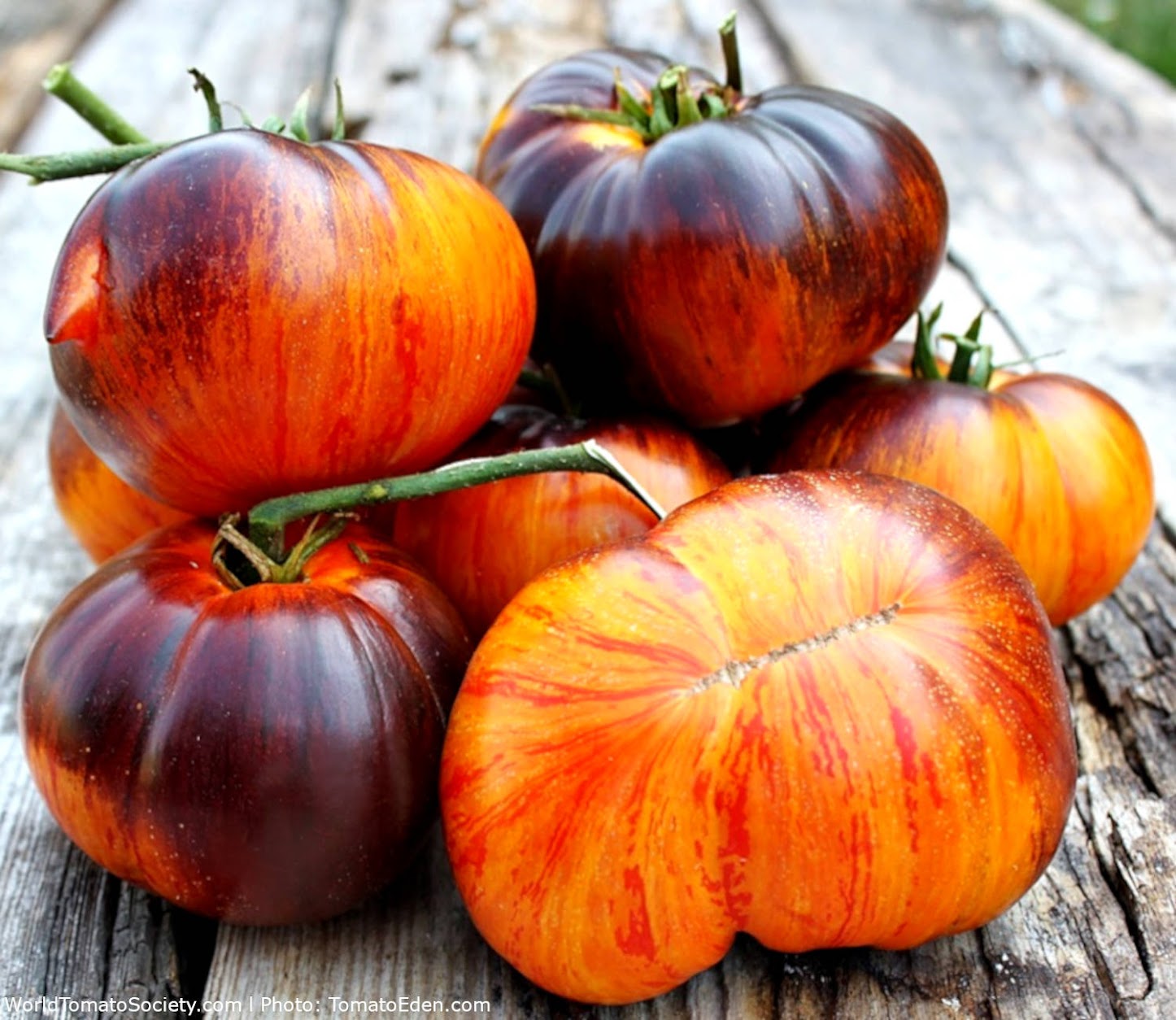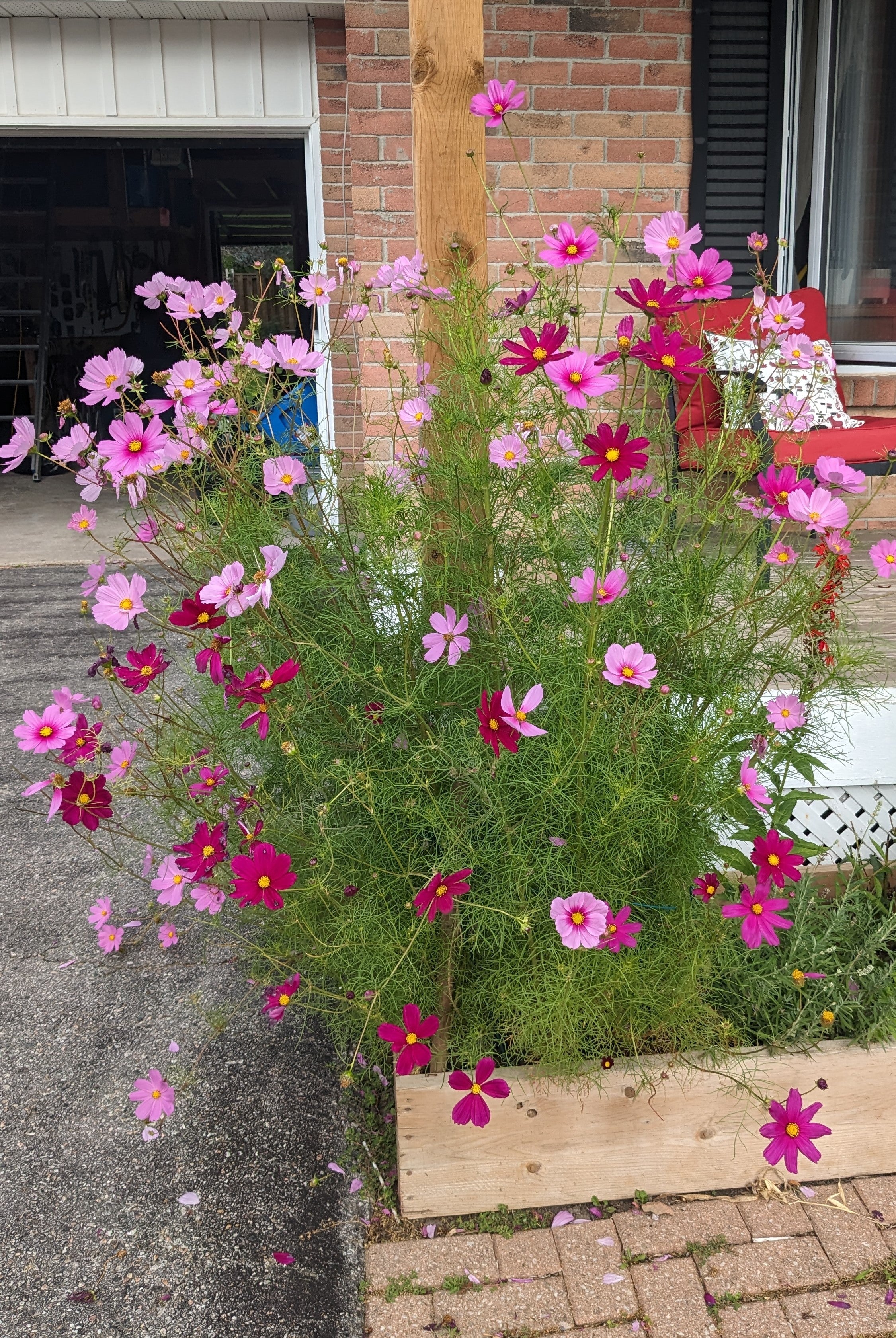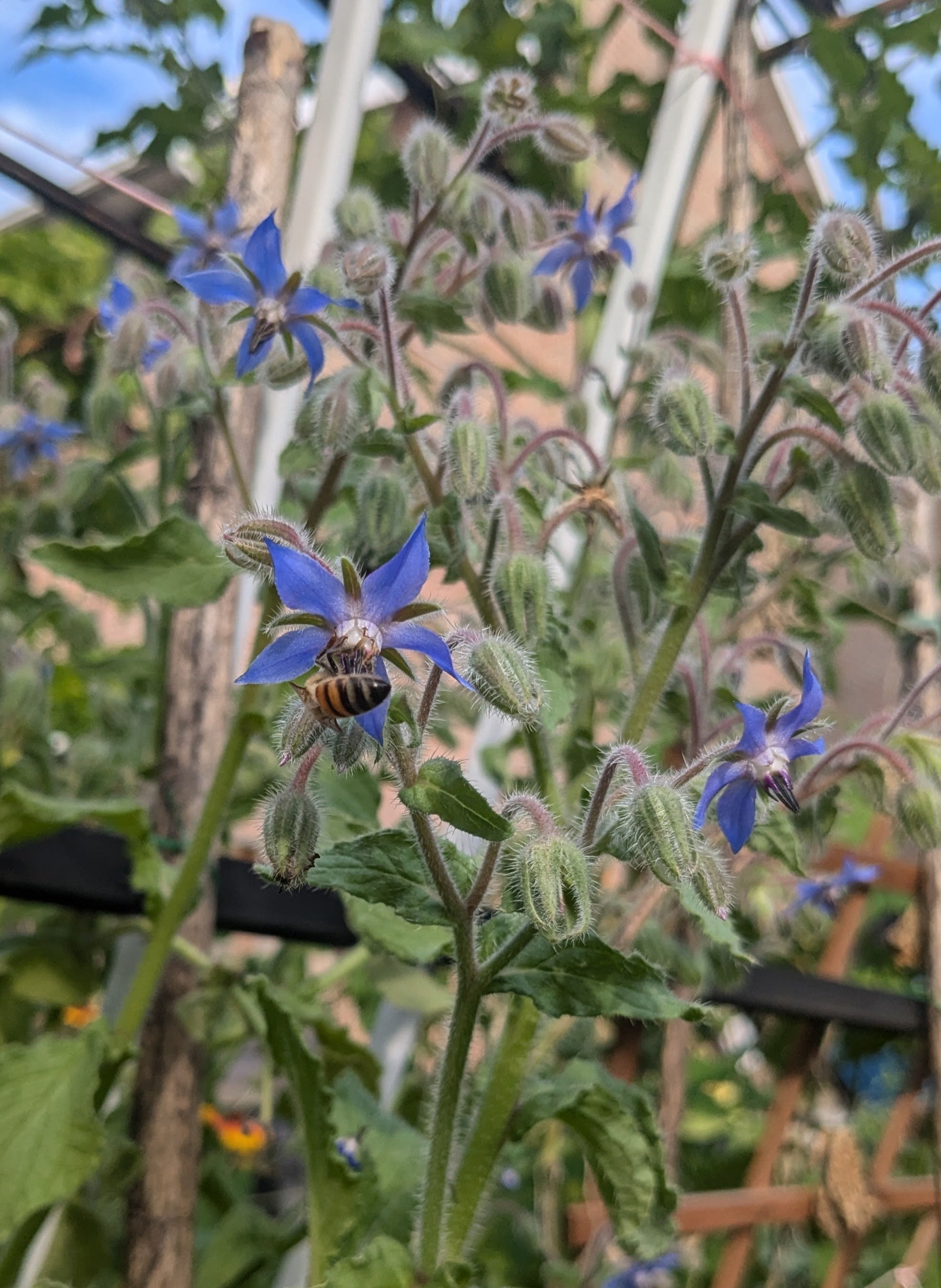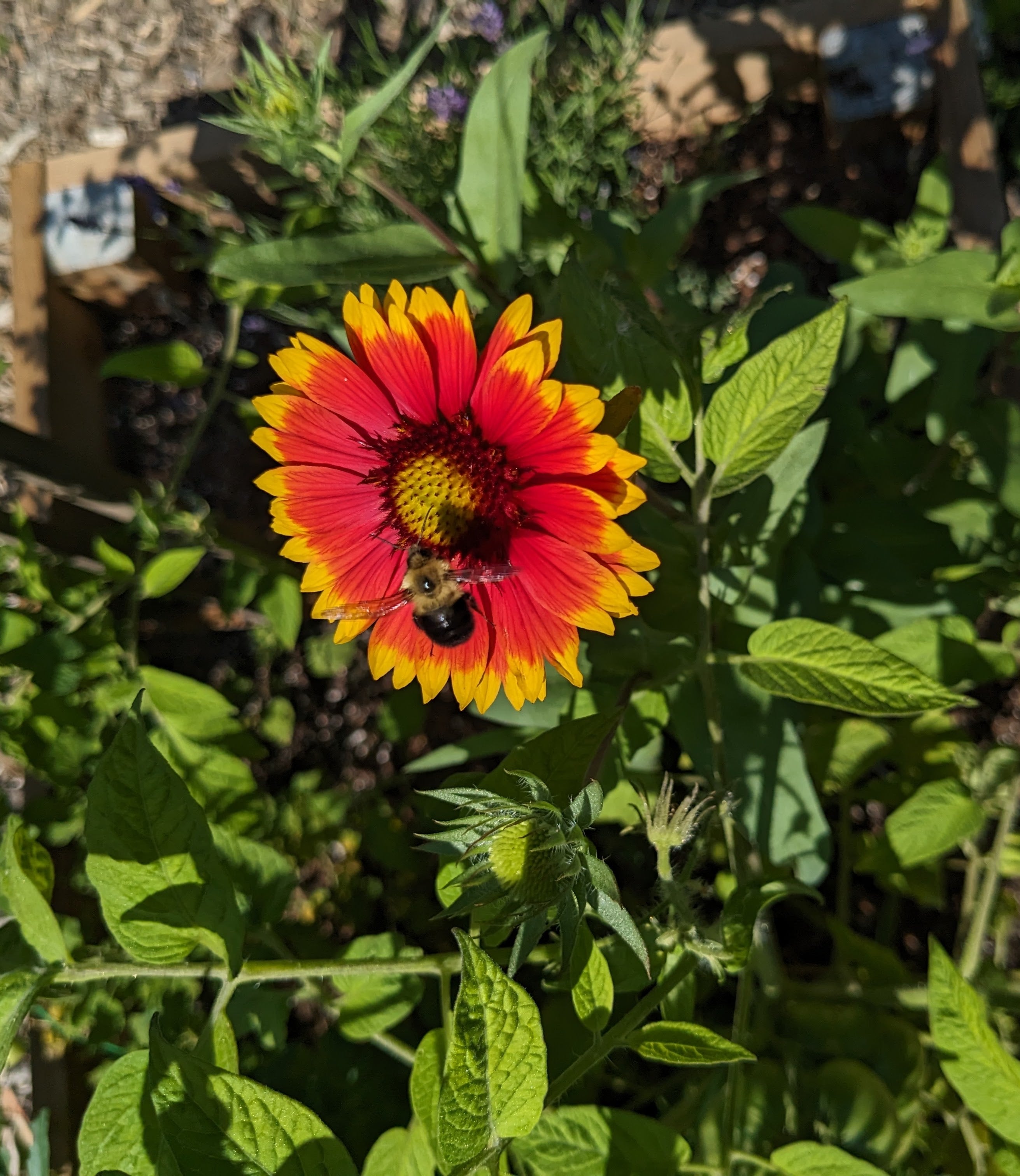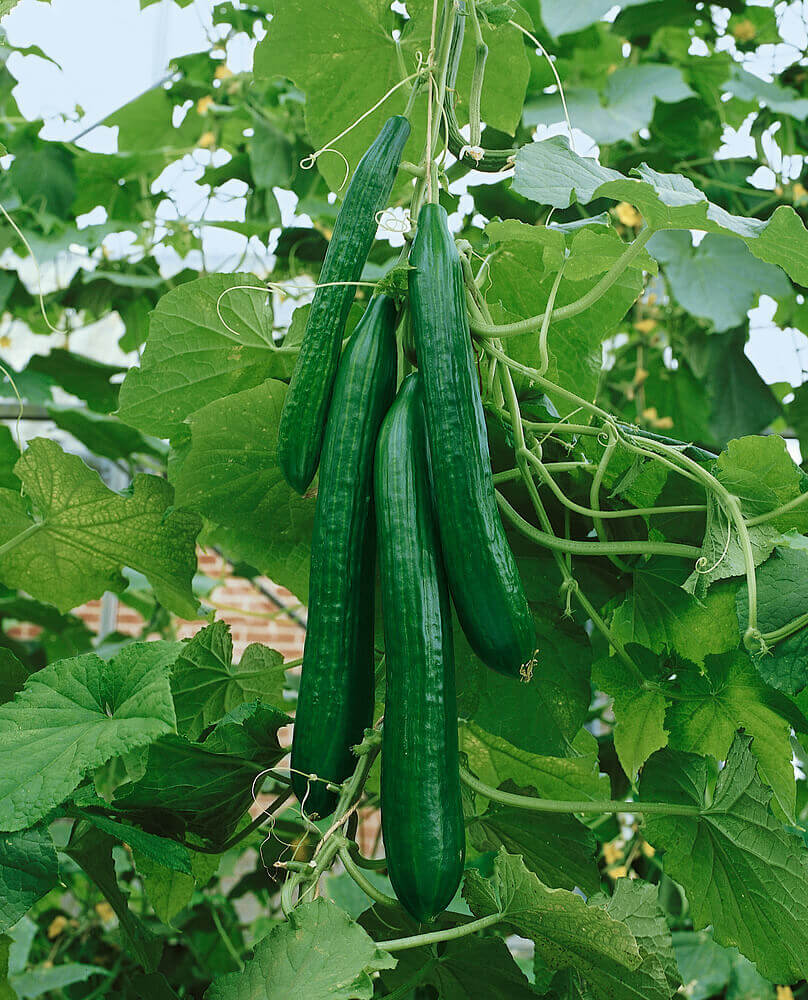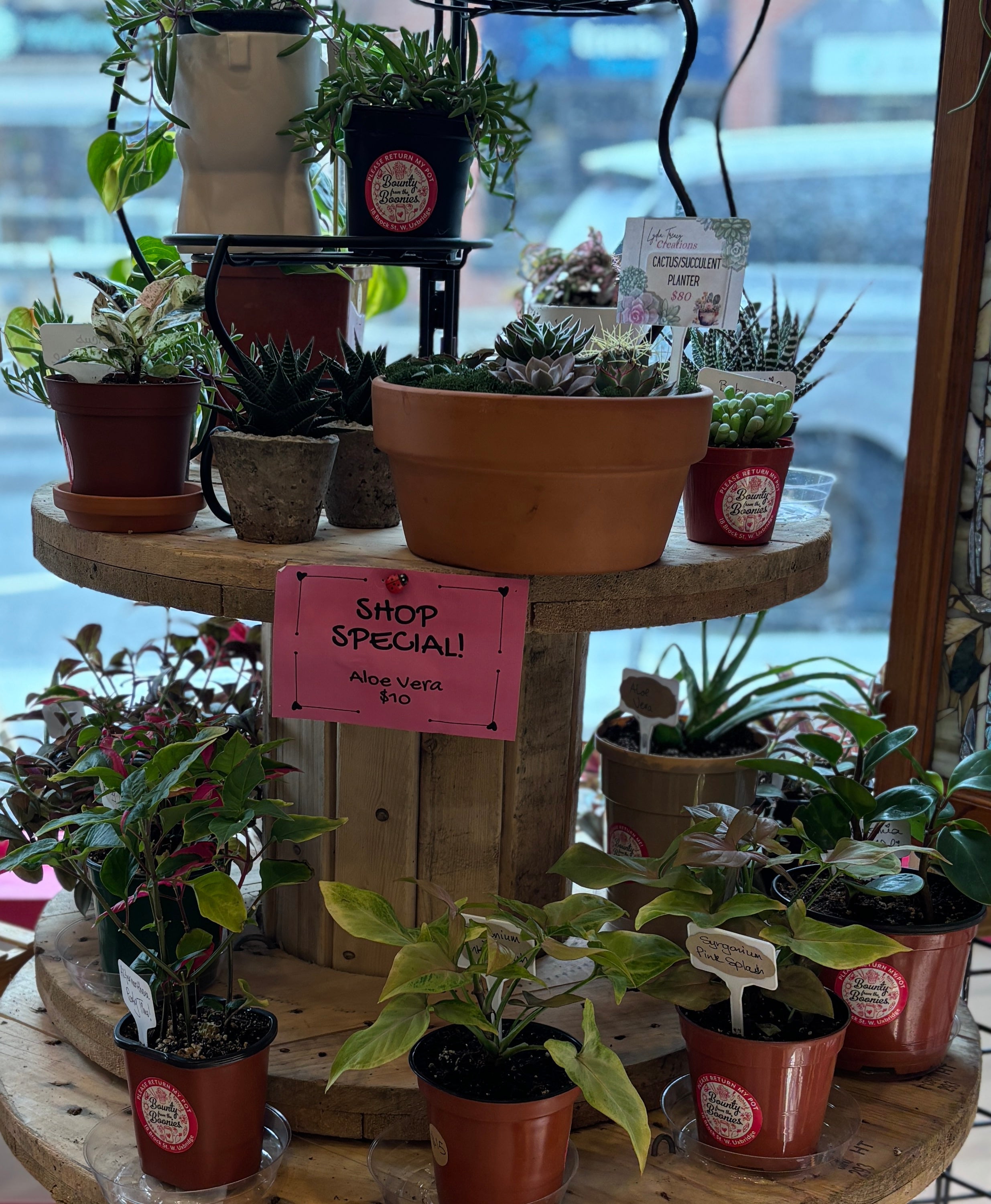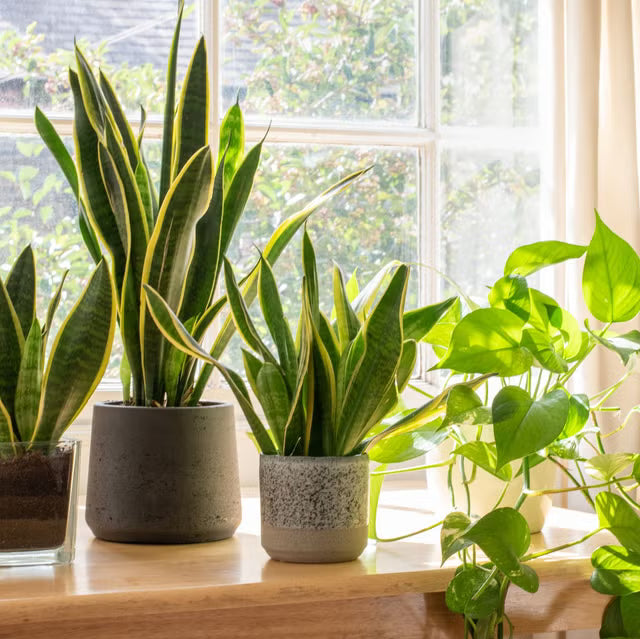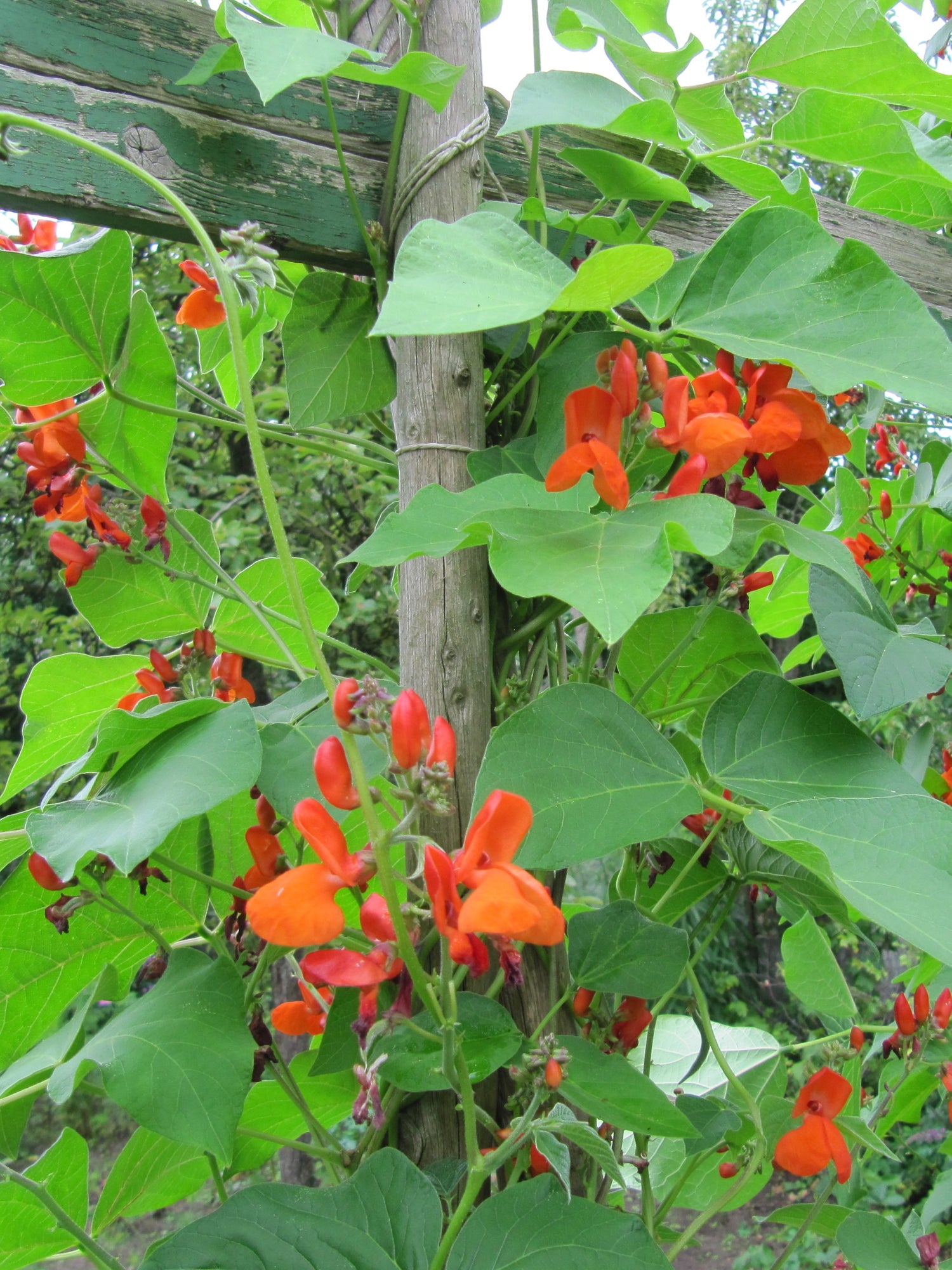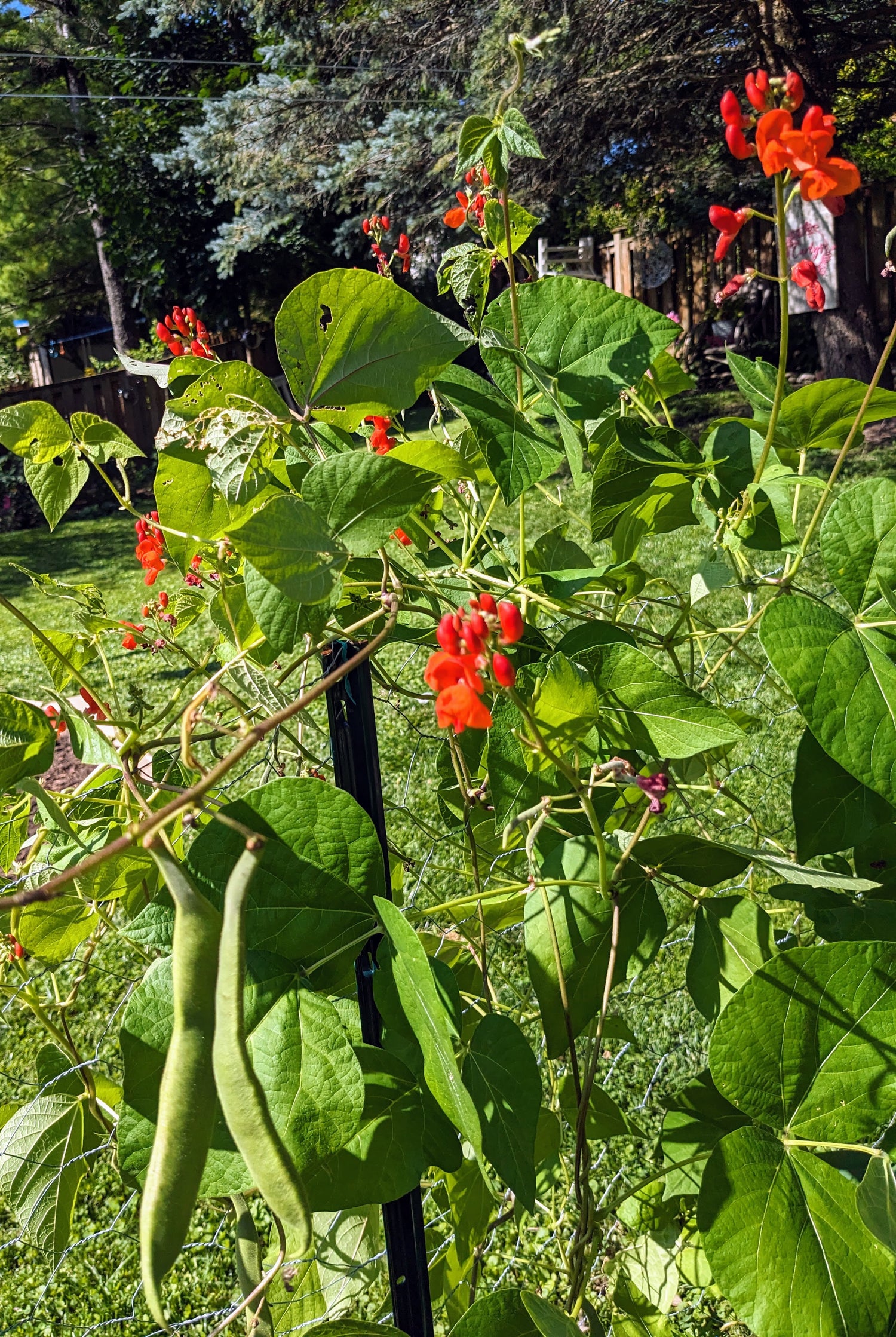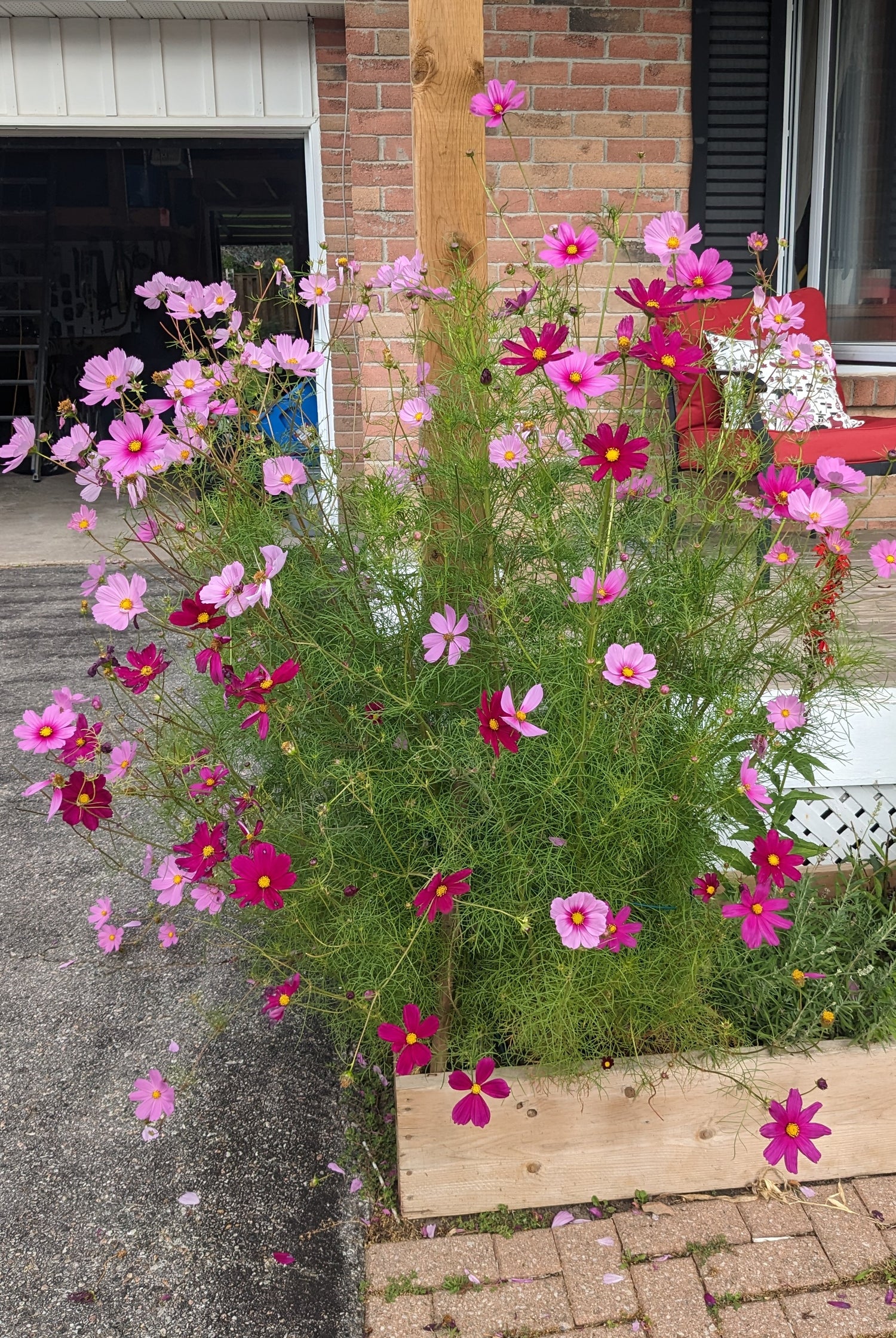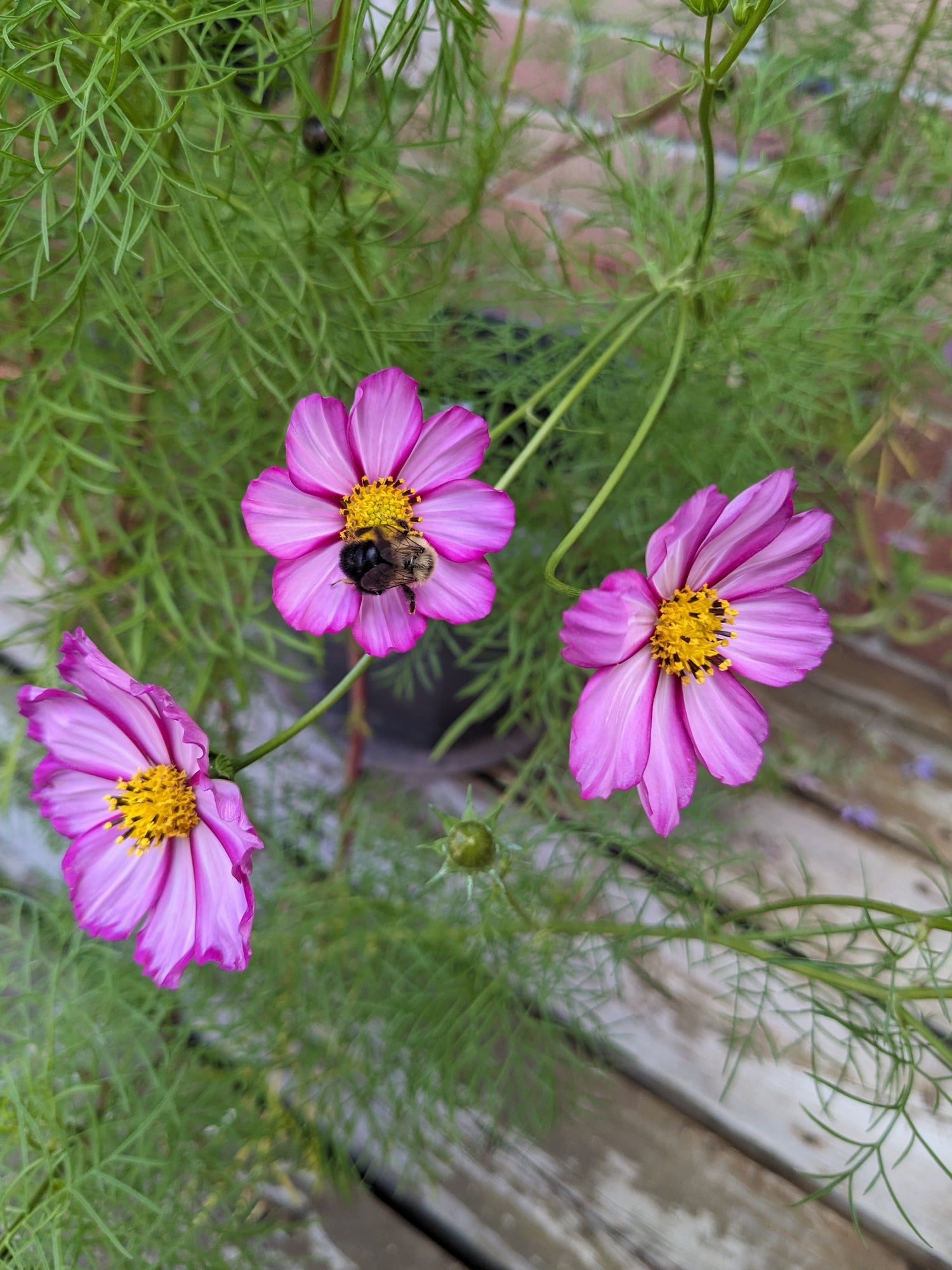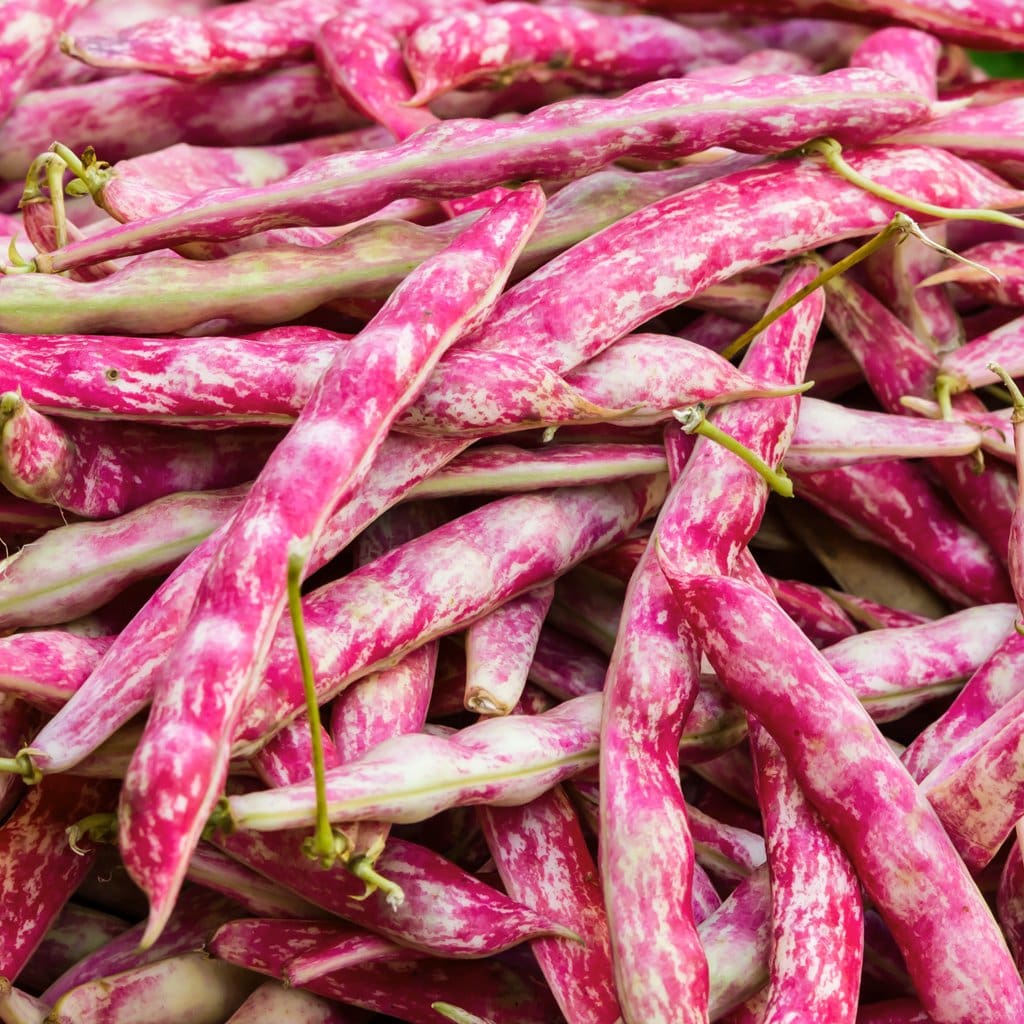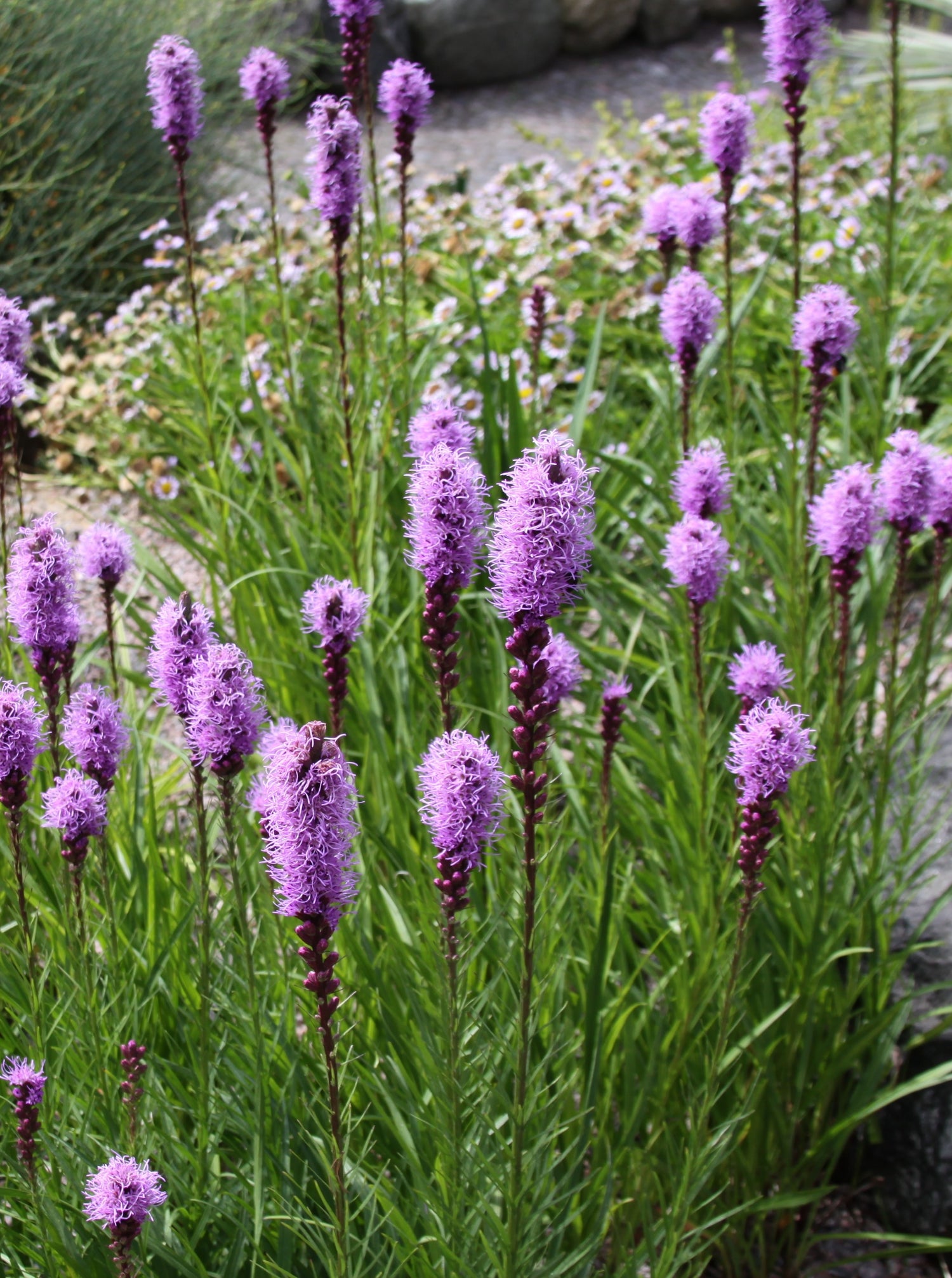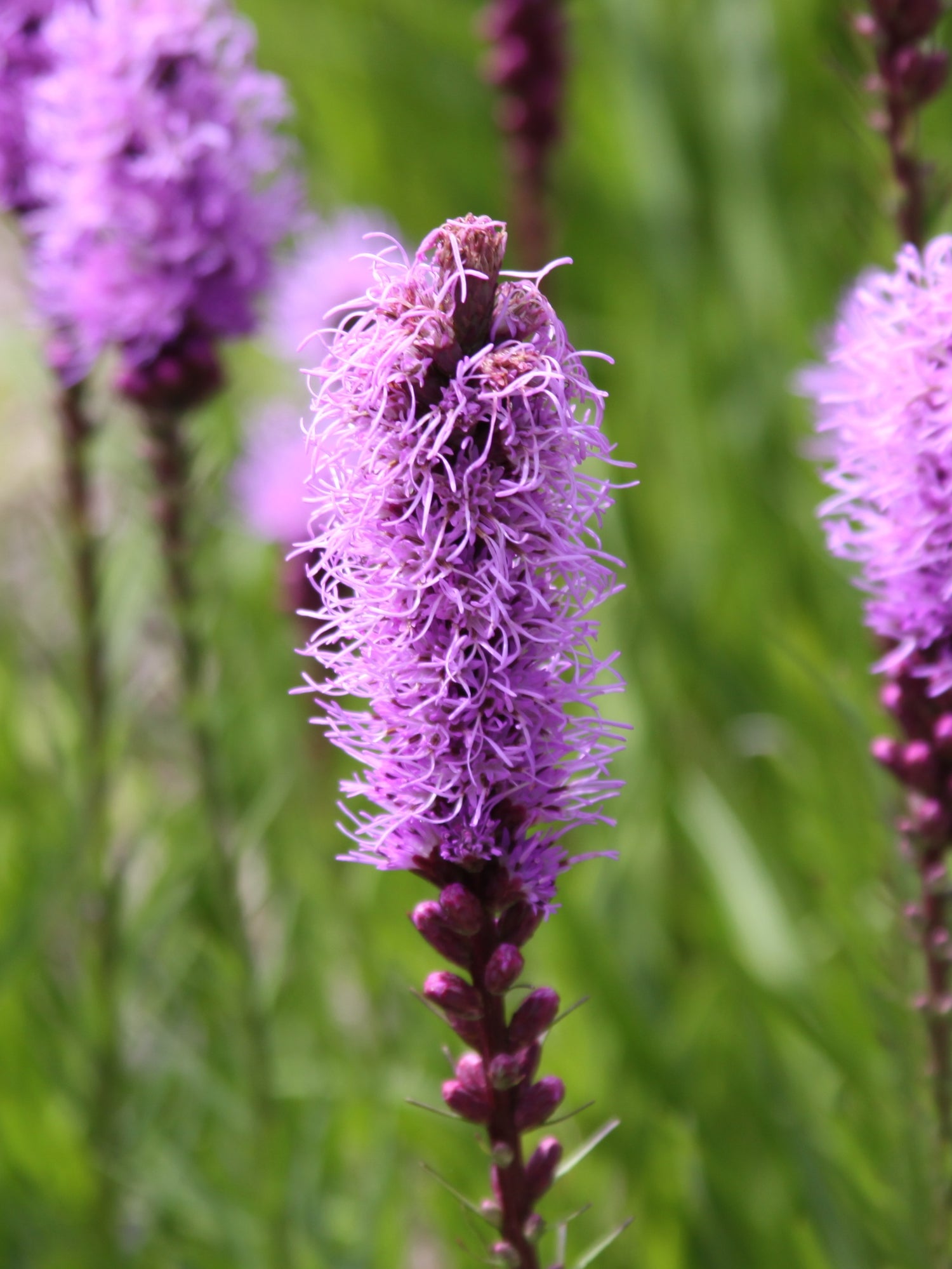Sort by:
32 products
32 products
I've grown Scarlet Runner Beans for many years for a very specific purpose: the flowers are a magnet for hummingbirds! I plant them along the fence of my food garden enclosure, where I train them to wind horizontally - each seed produces a vine 10-15 ft. Ruby Throated Hummingbirds (the only type I've seen in my Zone 5 gardens) visit the scarlet flowers, then zoom to the fruit and veggie plants, herbs and native plants. It's a joy to see.
While usually grown for their splendid flowers, every part of this versatile veggie is edible! The starchy roots, young leaves and even the flowers can be eaten. (Check out the bright pink-light purple fresh seeds! So fun.) Runner beans must be thoroughly cooked before eating, as they contain traces of lectin (phytohaemagglutinin), which is toxic in large quantities. The beans are dense, with a thick texture, and slightly smoky flavour.
Dried beans store excellent in the pantry, and can be added to soups and stews after soaking.
To get the most flowers, pinch off forming pods; this sends a message to the plant to push out more buds.
Type: Vegetable
Height: 10-15ft.
Light: full sun
Soil: well draining, warm
Planting: Direct sow late spring-early summer, 1-2" deep into warm soil (too cold, and the seeds will rot), 3-4" apart.
Harvest: 75 days
These gorgeous flowers absolutely pop in the garden, producing non-stop blooms from early summer-hard frost. They crawl with bumblebees, especially through the fall - non only for food, but as a soft sleeping bed in the cooling temperatures.
Blanket Flower need full sun and love the heat. I have them all over my property, in every type of soil - once established, they are happy as long as there's sun. Deadheading will keep the flowers prolific. A beautiful cut flower, tucked among amaranth, white phlox and sunflowers in a late summer bouquet.
Type: native perennial flower
Height: 2-3 ft.
Light: full sun
Moisture: drought tolerant
Planting: needs light to germinate. Lightly cover with soil, pressing to make contact. Keep evenly moist until germination. Can be direct sown after last frost.
Care: once established, Blanket Flower is low maintenance. Deadhead for more blooms
Bloom time: early summer-hard frost
I will never have a food garden without Borage. This stunning herb has unique blue-purple star-shaped flowers that pollinators - especially bumble bees - absolutely crawl over all season long. Every part of this plant is edible! It has a mild, cucumber-like taste that's delicious in salads and beverage garnishes. I dry the flower heads for bath salts, soap making + crafts, and when frozen in ice cubes Borage makes a whimsical addition to drinks.
Uxbridge Township’s flower!
These delightful beauties in cheery pinks (my favourite colour!) are showstoppers in my full sun gardens.
Daisy-like blooms sit atop long, slender stems with feathery leaves, forming a cloud of colour. Once blooming, you’ll have non-stop flowers until a hard frost.
They crawl with bumblebees, hoverflies, sweat bees and ladybugs; I love sitting quiet and close to a patch of Cosmos, listening to soft buzzing and watching the action. Small birds such as goldfinches and chickadees eat seeds from the dried flower heads.
An excellent cut flower, lasting a week or more. East Gwillimbury Garden Club 3rd place winner in 2023, any other annuals category.
Open-pollinated
Heirloom
Type: annual, but reliably self-seeds and returns in my Zone 5b garden
Colour: pink shades, from pale to dark crimson, some variegated, yellow centres
Mix of single, double and fluted blooms
Height: 30-183 cm (1-6 ft)
Soil: well drained, drought tolerant
Light: full to partial (6+ hours/day)
Planting: direct sow lightly, no more than 1/4” deep, in warm soil after last frost. For earlier blooms, start seeds indoors 4 weeks before last frost, then transplant outside after hardening off (LINK: how to harden off seedlings)
Care: low maintenance. Deadhead regularly
Bloom time: early summer - hard frost
Carly’s Tip: Water soil first, let saturate, then plant seeds. This prevent seeds – especially light, delicate ones not deeply sown – from moving/washing away.
What I love most about Cranberry Beans is their versatility (and that the pods are pink!): harvest them fresh off the vine for immediate eating, freezing, dehydrating or canning. Leave them on the vine to dry, and the seeds store perfect in the pantry for adding to soups and stews.
These Cranberry Beans (also known as borlotti) are meaty and hearty, with a richer taste than their bush bean cousins. They are vigorous pole beans, growing over 8 ft. tall in my veggie garden last year! They literally went up my trellis, then hung over the top like Dr. Seuss hair.
Beans are an excellent source of protein, fibre, starch and vitamins A & C.
Type: Vegetable, Pole Bean
Height: 8 ft+
Light: full sun
Moisture: keep soil evenly moist, but not wet or seeds will rot
Planting: 1" deep, into warm soil. I plant dense, in a container 3-4" apart
Harvest: 75-90 days
Butterflies, bees and hummingbirds love this plant's nectar, making Dense Blazing Star an excellent addition to pollinator gardens. Birds then eat the seeds through the winter.
I love the whimsical, long-lasting, bright, feathery pop of purples as it grows and flowers from the top down - truly unique. I grow it among White (dwarf) Lavender, Lance-Leaf Coreopsis, Spotted Bee Balm and Blanket Flower.
Type: Native Perennial
Height: 5 ft.
Light: full sun-part shade
Moisture: well draining, drought tolerant
Planting: Cold, moist stratification required - see options in photos, courtesy of Northern Wildflowers. Lightly cover (1/8" depth) with moist soil, and do not let seedlings dry out. OR direct sow in late fall to overwinter in the garden for blooms the following spring
Bloom time: July-late fall

